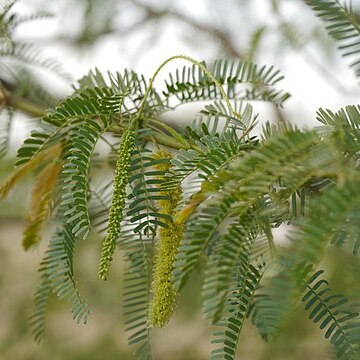Armed or unarmed, evergreen or sometimes deciduous trees and shrubs; spines nodal, axillary, paired or solitary. Leaves bipinnate; leaf axes with extrafloral nectaries; pinnae 1–8-jugate; leaflets small, numerous, opposite (in Australia). Inflorescence an axillary, spiciform raceme (in Australia). Flowers 5-merous, perfect, greenish or cream-coloured, yellowish when dry; perianth valvate; sepals united; petals free or united, hairy on inside at least apically (in Australia). Stamens 10, free; anthers with terminal, stalked gland; pollen grains shed singly. Pod indehiscent, linear, compressed, straight or curved, with a sweet and palatable pulp surrounding the seeds (in Australia); margins parallel, undulate or regularly constricted between the seeds. Seeds with pleurogram.
Shrubs or trees, spinous, prickly, or unarmed. Leaves bipinnate, rarely absent or very reduced; rhachis glandular at insertion of pinnae, with glands often also between leaflet-pairs; pinnae each with one to many pairs of opposite or rarely alternate leaflets. Inflorescences of spikes, spiciform racemes or heads. Flowers hermaphrodite. Calyx gamosepalous, with 5 teeth. Petals 5, free or connate below. Stamens 10, fertile; anthers with an apical gland which may sometimes be sessile and inconspicuous. Pods straight, curved or spirally coiled, woody or coriaceous, subcylindrical or ± compressed, internally septate between the seeds. Seeds hard, unwinged, with endosperm.

